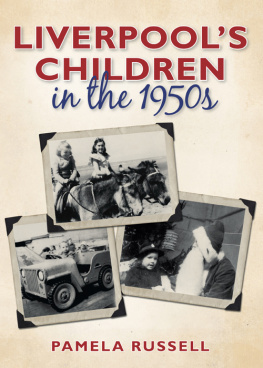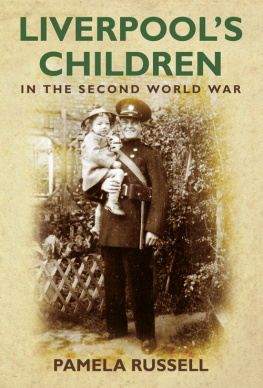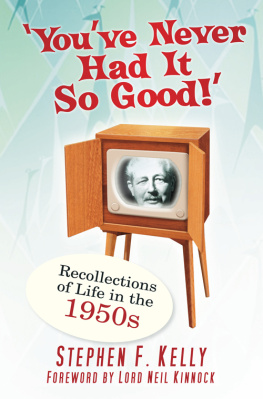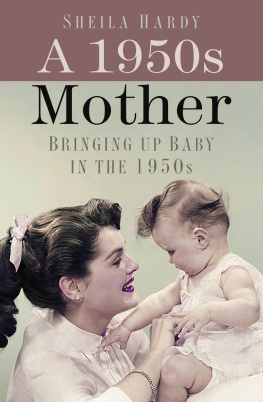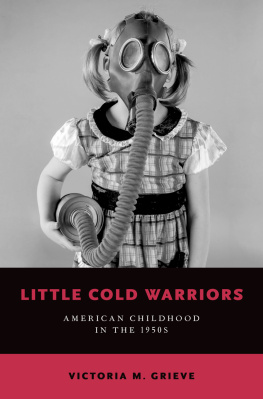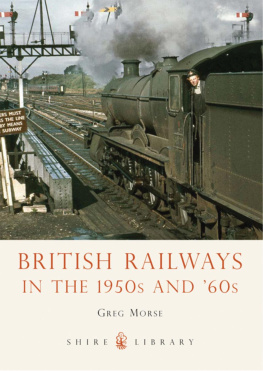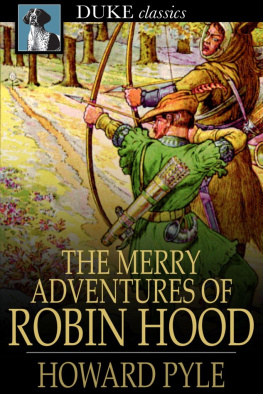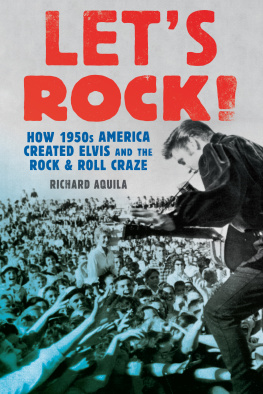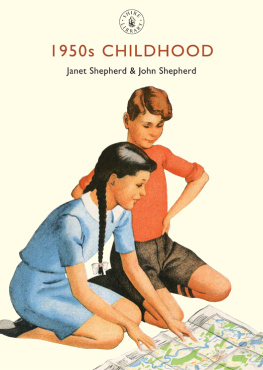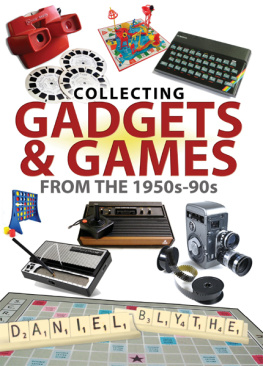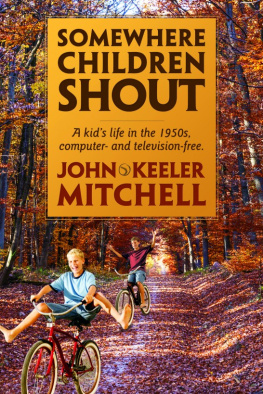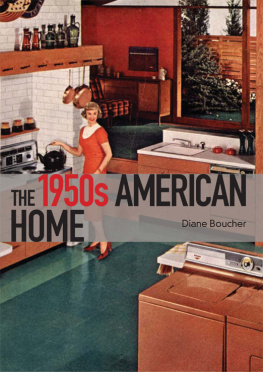
This book is for my husband, David; my son, Christopher; and my daughter-in-law, Sarah. Also for my sister and brother-in-law, Janet and Graeme Arnot; my brother-in-law, Harold Russell; my cousin, Brenda Bryce; Graemes brother, Terry Arnot; and Sarahs parents, Ron and Shirley Evans, all of whom are Liverpools Children

Lord Street, Liverpool, in 1953.
CONTENTS
My thanks to all the people who contacted me with stories of a 1950s childhood or lent photographs: Mary Allport; Graeme Arnot; Janet Arnot; Terry Arnot; Philip Baker; Christine Barrett; Pauline Bennett; Bobbie Binks; Carla Bird; Robin Bird; Chris Brocklehurst; June Buckley; Harry Byatt; Michael Chapman; Ann Cowley; Peter John (Dougie) Cox; Gordon Crompton; Jean Cross; Janet Dalton; Barry Davies; Christine Deed; Barbara Doran; Betty Duncan; Cliff Duncan; Margaret Dunford; William (Bill) Duvall; Elizabeth (Liz) Egerton; Eileen Ellis; William (Bill) Ellis; Shirley Evans; Derek Finney; Maimie Finney; Bill Fitzgerald; Pam Fitzgerald; Mike Formby; Patricia Gilbert; Joan Gillett; Margaret Gillson; Jim Greer; Charles Griffiths; Maddy Guest; John Halley; Bert Hamblet; John Hayes; Barry Hignett; Derek Jeffery; Patricia Johnson; Enid Johnston; Agnes Jones; Anne (Annie) Jones; Susan (Sue) Jones; Moira Kennedy; Eileen Kermode; William (Bill) Kermode; Linda Leaworthy; Maurice Levene; Ken Lloyd; Anne McCormick; Christine McGarry; Peter McGuiness; John McIlroy; Michael Moran; Doris Mousdale; Jean Mullen; Joan Munro; Angela Nelson; Shelagh Nugent; Tony OHara; Anne Orme; Mary Parkin; Arthur Parr; Janice Pickthall; Pat Plunkett; Hayley Prentice; Eileen Pritchard; Pamela Rattray; Joan Riding; Hazel Rimmer; Madeleine Roberts; Margaret Roberts; Sylvia Roberts; David Russell; Harold Russell; Alan Scott; Grahame Settle; Gillian Shaw; Patricia Shaw; Hazel Skarratts; Doreen Stock; William Stock; Joseph Swindells; Barbara Walsh; Norma White, ne Schafer; Norma White; Lilian Williams; Patricia Williams; Susan Williams. Also Gloria Nall (Champion Newspaper).
For photographs and other material my thanks go to the following people: David Russell, without whose technical and photographic expertise none of these photographs would have appeared; Christopher Russell for the Liver Bird; Robin Bird for permission to use photographs from the Bob Bird Collection and Val Stephens for the loan of her fathers comprehensive diaries.
Pamela Russell (M.Phil) is a retired Senior Lecturer of Edge Hill University, Ormskirk, Lancashire.
This is the story of the children of Liverpool, and the surrounding area, growing up in the 1950s. It includes as many peoples memories as possible told in their own words and aims to capture the warmth and excitement of their childhood and teenage years, set against the wider background of the events of the period. The fifties is a decade that is often dismissed as being dominated by the struggle to recover from the Second World War; in material terms it is depicted as a period when there was still rationing and austerity, and in social terms it is seen as a period of repression and greyness.
In fact, the fifties was a decade that saw huge change and progress, and an explosion of colour and exciting ideas. At the beginning, despite some hardships, it was a time when people were just happy to be at peace, to know that when they came home from work or shopping, their house would still be standing. They took pleasure in unsophisticated pastimes; it was a time when the company of friends and family was a matter for rejoicing. People felt relieved that anxiety was no longer their constant companion. There may have been some good-natured grumbling, but it was philosophical in tone Mustnt grumble! was a frequent comment.
As the decade progressed, life opened out. There was a new feeling that perseverance in hardship was finally being rewarded. Rationing was gradually disappearing and, when sweet rationing ended on 5 February 1953, everyone, especially children, rejoiced. Suddenly, on the shelves were old favourites and new delights to discover; children entered a wonderland of dolly mixtures, sherbet fountains, Chocstix, gobstoppers, midget gems, cherry lips, aniseed balls, liquorice torpedoes, alphabet letters, chewing nuts and Rowntrees fruit gums.
There were new and exciting inventions available to most people television is the most obvious, with programmes like Bill & Ben the Flowerpot Men and Rag, Tag and Bobtail for younger children; The Adventures of Robin Hood, The Buccaneers and Ivanhoe for older children and, for the newly recognised teenagers, all the excitement of rock n roll with Six-Five Special and Juke Box Jury. The affordability of record players and 45rpm records also changed peoples leisure time.
Brighter fashions in home decoration and more materialistic ambitions changed home life. A pervading optimism in adults affected the lives of children. At the beginning of the decade, when the warmth and cosiness of the family hearth, as depicted in Ovaltine advertisements, was the general ideal, a latchkey kid was often seen as an object of pity. Mothers tended to stay at home, unless there was an economic necessity for them to have a job.
The post-war shortage of housing meant that many children lived in the same house as their grandparents or other family members. Families also tended to live in the same district, or even the same street, as each other, so any extra childcare that was needed often stayed within the family. In the later fifties, labour-saving devices meant that many women could fit in, at least part-time, work outside the home and men began to welcome their contribution to the family budget.
The personal stories that appear in this book are the result of the generous response to my appeal for the memories of people who were children from the end of the war through to 1959. People see their 1950s childhood and youth as a Golden Age, when freedom from constant adult supervision was accompanied by an underlying and reassuring sense of security. There is a real desire to revisit this period, and to share it with others who remember those days, and also to convince those who are younger that these were good times.
Liverpools Children have been taken to include children growing up in the area stretching as far as Southport and Ormskirk, and including the Wirral. It is, perhaps, better defined as Greater Liverpool. Liverpools traditional sense of community, strengthened by the war years, provided a secure background from which children and teenagers could welcome a second Elizabethan era.
The city was just beginning its emergence in music and sport, which was to explode into the excitement of Liverpool in the 1960s. But, already, it was possible to sense the excitement in the air!
Pamela Russell, 2012
1
Mary Parkin, ne Fox, lived in a house that had been built during the time of Liverpools Edwardian splendour but had suffered the ravages of time and the Blitz:
I grew up, an only child, in Roscommon Street, Everton, in a house with a private landlord, which probably accounted for the state it was in by the 1950s. It had originally been a beautiful Edwardian terraced house with two huge cellars and two attics, as well as two large bedrooms on the second floor. At some point, probably in the war, the house had lost those houses to which it had been attached. We were on the end of a row without the luxury of a gable end, and the result was that the house was extremely damp and you could see evidence of this on the wallpaper inside the house. We had gas mantles until the landlord saw fit to install electricity, about 1952.
Next page
